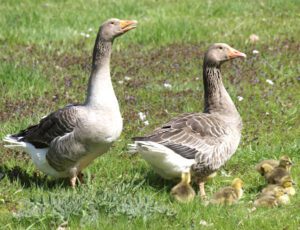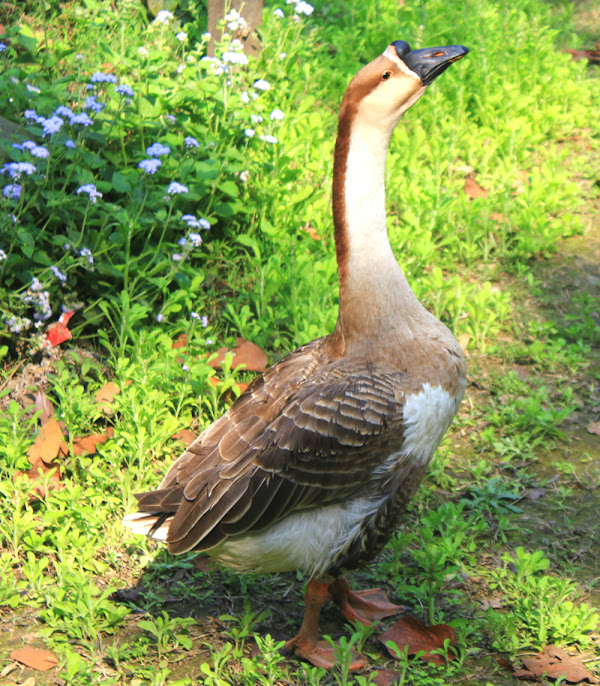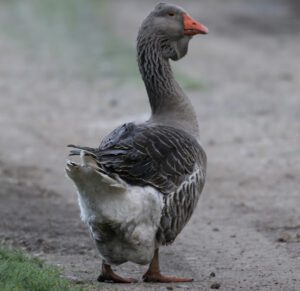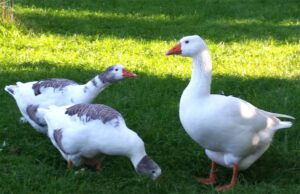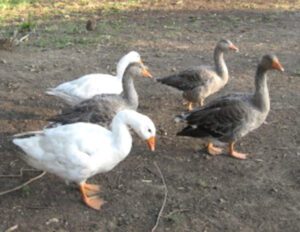The Shetland goose is a very hardy breed of domestic goose. It was originated from the Shetland Island in Scotland. It is small in stature like some other livestock breeds which are native to this island.
The breed has been used by crofters to graze pastures. And this was done to rid the grass of parasites, such as the liver fluke, to prepare it for grazing by sheep.
Goose have been recorded as being kept on Shetland from as early as the 17th century, although it is not certain that they are the exact descendants of the current breeds.
And as with so many of the other goose breeds, the Shetland goose was very important to cottagers and farms for providing a cheap and reliable source of meat.
The breed has been exported to the United States first in 1997. It is not yet recognized by the American Poultry Association in it’s Standard of Perfection.
Currently the breed is being studied by the American Livestock Breeds Conservancy. Read some more information about the breed below.
Shetland Goose Characteristics
The Shetland goose are easily identified by their appearance alone, like a few other goose breeds including Cotton Patch and Pilgrim breed.
The Shetland geese have a head, neck and upper body with gray highlights and a white underbody. While the ganders have entirely white plumage.
The birds usually have a shorter bill mainly due to their natural ability to forage. Their eyes are blue, and the neck are mainly white often with varying amounts of gray plumage.
The abdomen is relatively flat with a single-lobed paunch. The wings are powerful, allowing full ability of flight, and on some farms it may be necessary to clip the feathers of one wing to keep them at home.
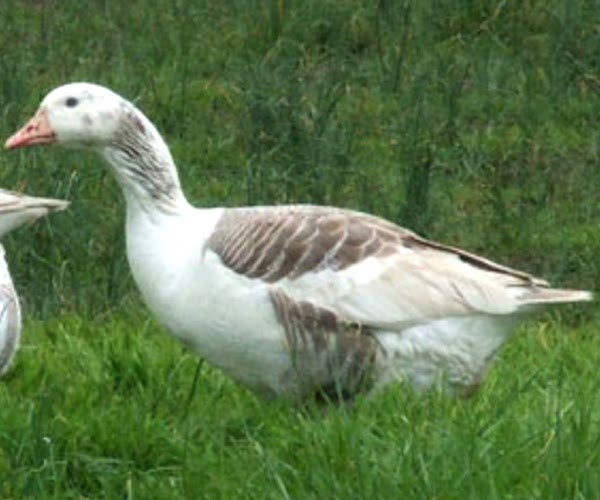
Average live body weight of the Shetland geese is around 5 kg. And the ganders on average weight around 6 kg. Photo from The Livestock Conservancy and info from Wikipedia.
Uses
The Shetland goose breed has been used by crofters to graze pasture. It was used to rid the grass of parasites, such as the liver fluke for preparing it for grazing by sheep. They are also used for meat production.
Special Notes
The Shetland goose are very hardy birds. They are exceptionally good foragers, and are able to largely sustain themselves through grazing.
The birds generally mate for life and are good parents. The geese on average lay around 30 eggs per year. The breed is great converter of grass to meat, and in the Northern Islands they will forage on seaweed which is not usual for other goose.
It is also very suitable as a good guard goose. The breed grow relatively faster, and are very good for meat production. They retain many other natural instincts, and will flock during the non-breeding seasons, and band together to ward off predators.
However, review full breed profile of the Shetland goose in the following chart.
| Breed Name | Shetland | |
| Other Name | None | |
| Breed Purpose | Meat, Weeding | |
| Special Notes | Very hardy, exceptionally good foragers, are able to largely sustain themselves through grazing, good convert ratio of grass to meat, good guard goose, grow relatively faster, good for meat production | |
| Breed Class | Medium | |
| Ganders | Around 6 Kg | |
| Geese | Around 5 Kg | |
| Broodiness | Average | |
| Climate Tolerance | Native climates | |
| Egg Color | White | |
| Egg Size | Large | |
| Egg Productivity | Around 30 eggs per year | |
| Flying Ability | Good | |
| Varieties | Single | |
| Rarity | Critical | |
| Country/Place of Origin | United Kingdom |

